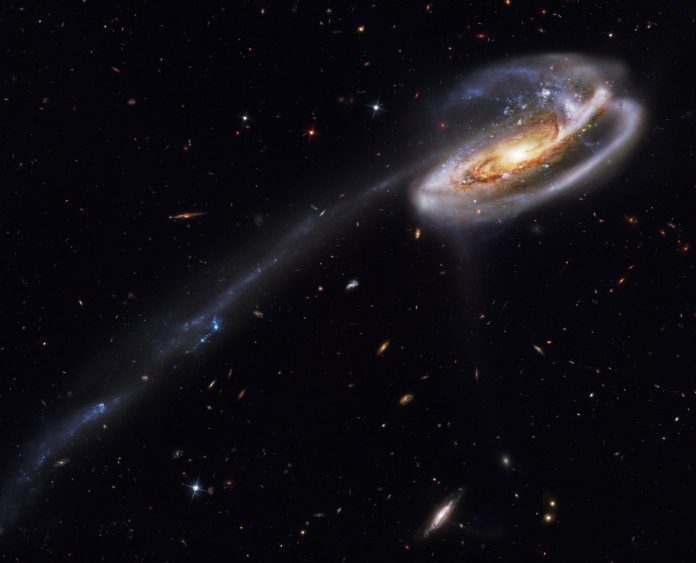Researchers have identified a new kind of star that up until this point had only been considered hypothetically: an ancient sun that has lived so long, its outermost layer is now composed almost entirely of pure oxygen.
The new discovery is the most distant oxygen ever seen by a telescope. And it could change our understanding of how stars and the universe as we know it came about.
The galaxy is so far away that we are seeing it as it was when the universe was only 500 million years away. And even at that age, it is filled with mature stars – suggesting the process of their formation began only 250 million years after the universe itself began.
For some time after the big bang, there was no oxygen in the universe. It did not come about until after the first stars were formed, being released when they died again.
As such, the oxygen discover was unexpected because it suggests that had happened even when the universe was relatively young. That discovery appears to be confirmed by a model that confirms the current brightness of the universe corresponds with it being formed when it was only 250 million years old.
Scientists described the detection of such distant oxygen as a discovery that fundamentally changes our understanding of the beginnings of the universe, as well as being a major breakthrough in our technical exploration of it.
“Rather than saying I was happy, it would be more accurate to say I was thrilled to see the signal of the most distant oxygen,” explains Takuya Hashimoto, the lead author of the research paper published in the journal Nature and a researcher at Osaka Sangyo University and the National Astronomical Observatory of Japan. “I was excited enough that the signal appeared in my dreams and I had difficulty sleeping that night.”
The age of those stars raises questions about when the very first galaxies emerged from the complete darkness that initially made up the universe, a moment known by scientists as the Cosmic Dawn.
“Determining when cosmic dawn occurred is akin to the Holy Grail of cosmology and galaxy formation,” said Richard Ellis, senior astronomer at UCL and co-author of the paper. “With these new observations of MACS1149-JD1 we are getting closer to directly witnessing the birth of starlight! Since we are all made of processed stellar material, this is really finding our own origins.”
It also suggests that galaxies were forming long before we can actually see them now, making the process of star formation even more mysterious.
“The mature stellar population in MACS1149-JD1 implies that stars were forming back to even earlier times, beyond what we can currently see with our telescopes. This has very exciting implications for finding ‘cosmic dawn’ when the first galaxies emerged,” adds Nicolas Laporte, a researcher at University College London/Université de Toulouse and a member of the research team















